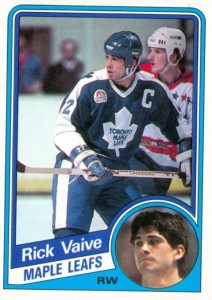American Hockey League (1992-1994)
Tombstone
Born: April 1992 – AHL expansion franchise
Moved: May 1994 (Syracuse Crunch)
First Game: October 9, 1992 (L 7-3 vs. Rochester Americans)
Last Game: April 20, 1994 (L 6-4 @ Cornwall Aces)
Calder Cup Championships: None
Arena
Copps Coliseum (17,028)11992-93 American Hockey League Guide & Record Book
Opened: 1985
Marketing
Team Colors: Black, Yellow & Red21992-93 American Hockey League Guide & Record Book
Mascot: Canuckosaurus Rex
Ownership & Affiliation
Owners:
- 1992-1993: Pat Hickey, Dieter Beer and Bernie Faloney
- 1993: Brad Sherman & Donald Starr
- 1993-1994: Vancouver Canucks
NHL Affiliation: Vancouver Canucks
Attendance
Tilting your mobile device may offer better viewing.
Source: 1994-95 American Hockey League Official Guide & Record Book
Background
The Hamilton Canucks were a short-lived American Hockey League farm club that lasted two seasons from 1992 to 1994. The club was done in by the combination of an unfavorable lease at Hamilton’s Copps Coliseum and ownership turbulence throughout its twenty-four month existence.
The driving force to bring professional hockey to Hamilton was Pat Hickey, a Hamilton-area native and former NHL and World Hockey Association player. Hickey assembled an ownership group that included Dieter Beer and former Hamilton Tiger-Cats and Canadian Football League Hall-of-Famer Bernie Faloney. The AHL awarded an expansion franchise to the group in April 1992. The new club signed an affiliation deal with the NHL’s Vancouver Canucks.
Debut Season
 The 1992-93 Canucks finished last in the AHL’s six-team Southern Division with a 29-45-6 record. In addition to Canucks prospects, the club also featured a couple of well-known NHL veterans finishing out their playing days in the NHL. Defenseman Mario Marois enjoyed a fifteen-year career in the NHL (1977-1992) before playing a final season as a player/assistant coach in Hamilton. Rick Vaive was a former linemate of Hamilton owner Pat Hickey with the Toronto Maple Leafs of the early 1980’s. Vaive recorded three straight 50 goal seasons for the Leafs from 1982 to 1984. Like Marois, the 1992-93 campaign would be Vaive’s last before retiring.
The 1992-93 Canucks finished last in the AHL’s six-team Southern Division with a 29-45-6 record. In addition to Canucks prospects, the club also featured a couple of well-known NHL veterans finishing out their playing days in the NHL. Defenseman Mario Marois enjoyed a fifteen-year career in the NHL (1977-1992) before playing a final season as a player/assistant coach in Hamilton. Rick Vaive was a former linemate of Hamilton owner Pat Hickey with the Toronto Maple Leafs of the early 1980’s. Vaive recorded three straight 50 goal seasons for the Leafs from 1982 to 1984. Like Marois, the 1992-93 campaign would be Vaive’s last before retiring.
Off the ice, the Hamilton Canucks claimed average attendance of 4,773 for the 1992-93 season. That figure was fourth best in the 16-team AHL and the highest among the league’s six Canadian clubs.
Ownership Crisis & Demise
Hickey’s original partners departed during the summer of 1993 as the club prepared for its second season. Beer and Faloney left, replaced by new investors Brad Sherman and Donald Starr. The new owners soon ran into money problems and grew disenchanted with the Copps Coliseum lease. In mid-October 1993, less than a month into the 1993-94 season, Hickey was forced out. Two weeks later in early November, the Canucks ownership group, Double Hitch Enterprises, shutdown their team offices at the Coliseum and ceased operations.
The possibility loomed that the Hamilton Canucks would fold in midseason. Double Hitch Enterprises went into receivership in mid-November. The Vancouver Canucks reluctantly assumed responsibility for operating the ownerless club through the duration of the 1993-94 campaign. Attendance dropped over 25% to 3,349 per game for the lame duck club.
On the ice Hamilton rebounded in 1993-94, finishing 36-37-7, good enough for a playoff series against the Cornwall Aces. The Aces eliminated Hamilton from the Calder Cup playoffs on April 20th, 1994. The following day, Vancouver Canucks officials announced that the club would not return to Hamilton for a third season. In May 1994, the club was officially transferred to a new ownership group in Syracuse, New York and the franchise became the Syracuse Crunch.
The Syracuse Crunch continues in the AHL to this day, entering its twenty-first season in the winter of 2014-15.
Links
American Hockey League Media Guides
American Hockey League Programs
###


One Response